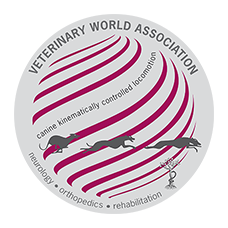"An X-ray does not talk"
"The tangle of opinions on puppy movement must be replaced by scientific research and facts-based analysis," says veterinarian Patrick Blättler Monnier, whose Puppy Pass Study aims to do just that. The first results will be presented in two years.
By Marianne Mathys
Mr Blättler Monnier, what is the aim of the Puppy Pass Study?
The prophylactic factor is the most important, especially with regard to hip joint and elbow dysplasia, OCD and panosteitis. The second most important factor is the even build-up of muscles, and the resulting improvement in skeletal stability. This is only possible with a healthy biomechanical skeletal system.
Who can register?
All owners of the dog breeds Golden Retriever, Rottweiler and Australian Shepherd, from Switzerland and abroad. The participation is - except for the time required and the journey costs - free of charge, all services including x-ray and evaluation are at our expense.
What benefits do the participants have?
Their dogs receive, from an orthopaedic view, an optimal start as a healthy and strong young dog for a dynamic and active life, be it for work, leisure or sports activities.
Are there any dangers with the Puppy Passport Study?
No, the study was approved as an animal welfare experiment with the severity level 0, meaning there is NO burden on the dog. The owner is present at the examination, and then takes the dog back home again.
How many participants are in the program?
There are already 20 participants.
What happens with the collected data?
This data will be anonymized and statistically evaluated. The total duration of the study is three years; since the study is already up and running, the first results should be published in about 2 years’ time.
You have developed a new diagnostic tool for use in the context of the Puppy Pass. Why?
We're talking about functional Orthopaedics. Every day I am examining exclusively dogs with orthopaedic Problems, where the structural diagnostics such as X-ray, CT and MRT provide no explanation for the lameness, the limp or the cause of pain. The motion measurement is effective exactly where the abovementioned diagnostic imaging equipment fails to help. This is the big advantage.
When the study is completed, will you offer a Puppy Pass to all owners?
This has been possible since 2007, and since 2015, I am also providing the kinematically controlled tests, within the scope of my normal range of services.
Will there be other veterinarians in the future who offer a Puppy Pass for everyone?
Yes indeed - preparations for this are already in hand.
Do you need additional training to interpret the gait analysis data for the Puppy Pass, or can any vet, or even a layman, do this?
In either case, a definite no. One needs a training in functional orthopaedics and in the interpretation of the gait analysis parameters. This is comparable to acquiring the competence to understand and interpret an X-ray, CT or MRI image.
Do you think that motion diagnostics will one day be used to the same extent as the official elbow and hip joint dysplasia x-ray?
Yes, definitely. In my practice, in addition to every official HD X-ray, we make a gait analysis. I have a favourite saying: 'An X-ray can’t talk, but a gait analysis speaks volumes'. We are already working on algorithms for the classification and for machine learning processes, so that in the future, thanks to gait analysis, pathologies can be automated.
What more do you need to ensure that the Puppy Pass Study will benefit future generations of dogs?
We are looking for at least 30 to 40 puppies from each of the three eligible breeds, Golden Retriever, Rottweiler and Australian Shepherd. The faster that puppy owners of these three breeds register for participation in the free study, the sooner we can have the data, not only for the benefit of their puppies, but for all future puppies too. After all, the Puppy Pass measurement duration is only 12 months. Accordingly, I hope for a large number of registrations for this study.
About the person

Patrick Blättler Monnier runs a Veterinary Practice with focus on orthopaedics, back and pain therapy with specialization in functional diagnostics (movement and pain diagnostics).
The most important information in brief
The puppy passport was created 12 years ago by Dr. Patrick Blättler Monnier. Since 2015 it has been further developed by the inclusion of kinematics. The target group are owners of Australian-Shepherd,Golden Retriever or Rottweiler puppies.
- the participation is free of charge.
- the puppy goes through 9 kinematic control examinations based on the "FidoGait" movement diagnostics.
- at the age of 15 months the dog will be HD/ED x-rayed and officially evaluated.
by participating, owners make an important contribution to research, as they make the data of their dog available to this study, in turn helping to better understand the development of the puppy.
